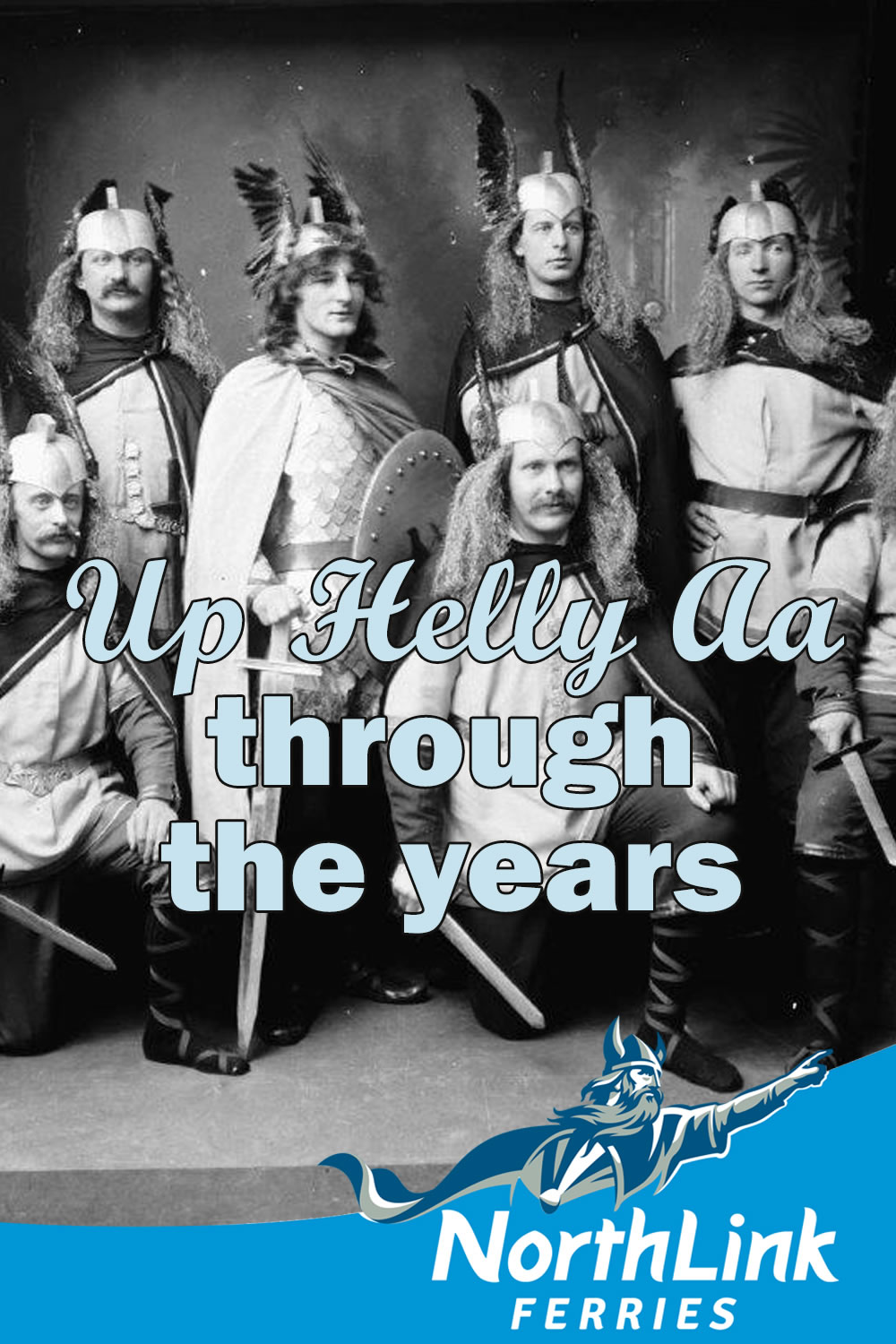Up Helly Aa through the years
2021 and 2022 were significant years for Up Helly Aa, marking two of the few times that Shetland’s famous fire festival has been postponed until the following year.
In previous years, Up Helly Aa processions included several amazing battleship models made by the docks boys as well as the Viking longship. In 1912 the docks boys were asked to stop making other ships and to concentrate their efforts on the galley. From this year, the centrepiece – a 30ft long galley – was spectacular. The docks boys dressed as Vikings and when everyone saw how impressive they looked, they were asked to lead the procession that year.
We have taken this opportunity to look back at the other years that were significant for Up Helly Aa.
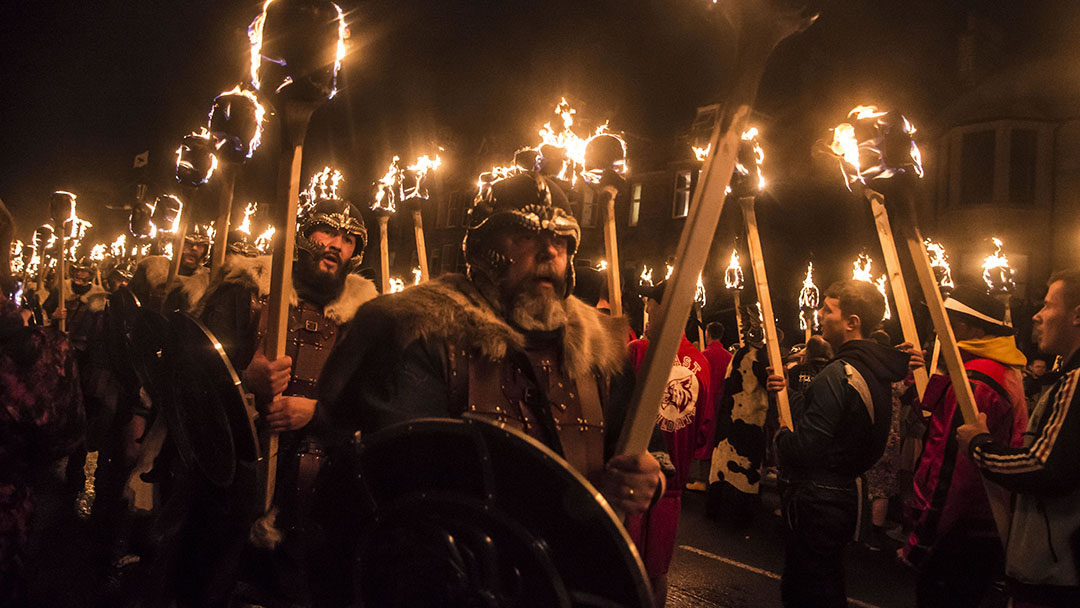
Up Helly Aa has a combination of influences. The first influence was that, in the past, Yuletide celebrations began on the 5th January (Old Yule) and ended 24 days later. This final day was called Up Helly Aa in Shetland and was a day of fire, feasting and frolic.
The second influence is the old Shetland custom of guizing. This tradition involved disguising yourself, visiting a friend’s house, performing a turn and then unmasking to reveal yourself.
The final influence would be Shetland’s Norse heritage. Vikings were feared in other parts of the world but in the north of Scotland this heritage was celebrated. Vikings were symbols of strength who survived the weather and the sea. It was also known that, in days gone by, a dead Norse Jarl would journey to Valhalla on board a burning longship.
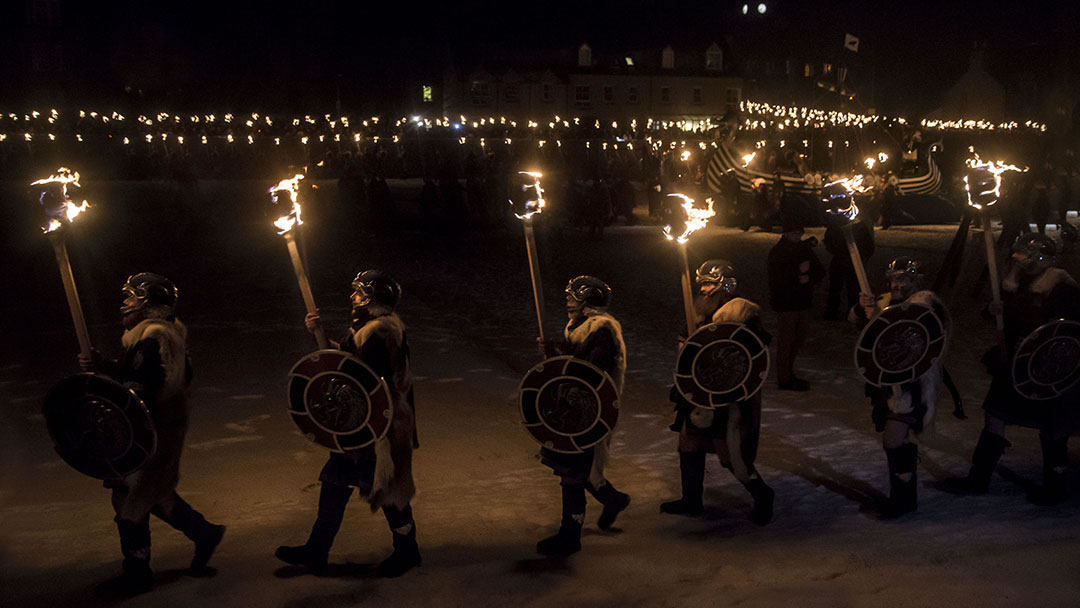
Before Up Helly Aa, a much more dangerous activity took place in Lerwick. This was tar barrelling, and it involved a mob filling a huge fish tub (a krate) with tar, oil and old ropes, setting it alight, and dragging the flaming sled around the town.
Eventually, two krates were used, one for the Docks Boys (men from the boat building area in the north) and one for the Southerners (men from the area around Commercial Street). These would often get jammed in the narrowest parts of Lerwick.
This was in the 18th century when Lerwick was a bit more lawless. Like many seaports, it started life as a good-time town for fishermen, sailors, and smugglers. However, as Lerwick developed, churches were built, suburbs appeared and the town became a more respectable place. Rowdy behaviour such as tar barrelling was frowned upon.
| 1874 | The practice of tar barrelling was banned. |
| 1881 | The year of the first torchlight procession. It was orderly but had no leader. At the end of the procession, the guizers began visiting open houses and performed a turn at each. |
| 1882 | A torchlight procession took place again, but this time the first Worthy Chief Guizer, Peter W. Greig, was appointed, along with the Committee of Management to organise the event. In the first years, there was no official uniform - the Worthy Chief Guizer did not dress as a Viking. |
| 1885 | There was no Up Helly Aa in 1883 or 1884, but in 1885 the event was well organised, with instructions to guizers on where and when to attend written on a placard (a precursor to the Bill) and displayed at the Market Cross. |
| 1888 | The brass band joined the procession for the first time. It was also clearly established this year that only guizers could take part in the procession. |
| 1889 | The first Viking longship was used, however in an uncomfortable echo of tar barrelling, it was set ablaze and pulled through Lerwick. This was a significant year when the festival began to find its own identity. However, every year since, the galley has been dragged to a burning site before being set ablaze. In the early years, old boats were modified to look like a longship. |
| 1893 | A model of a lighthouse was used instead of a galley in the procession and set alight. The reason for this change is lost to history! |
| 1896 | More organisation was brought to the festival, including the numbering of each squad. For the first time the galley had a raven banner on its mast, echoing the black raven and Norse galley on the Lerwick Burgh coat of arms. The guizers also sang the Hardy Norseman (now called the Norseman's Home) for the first time. |
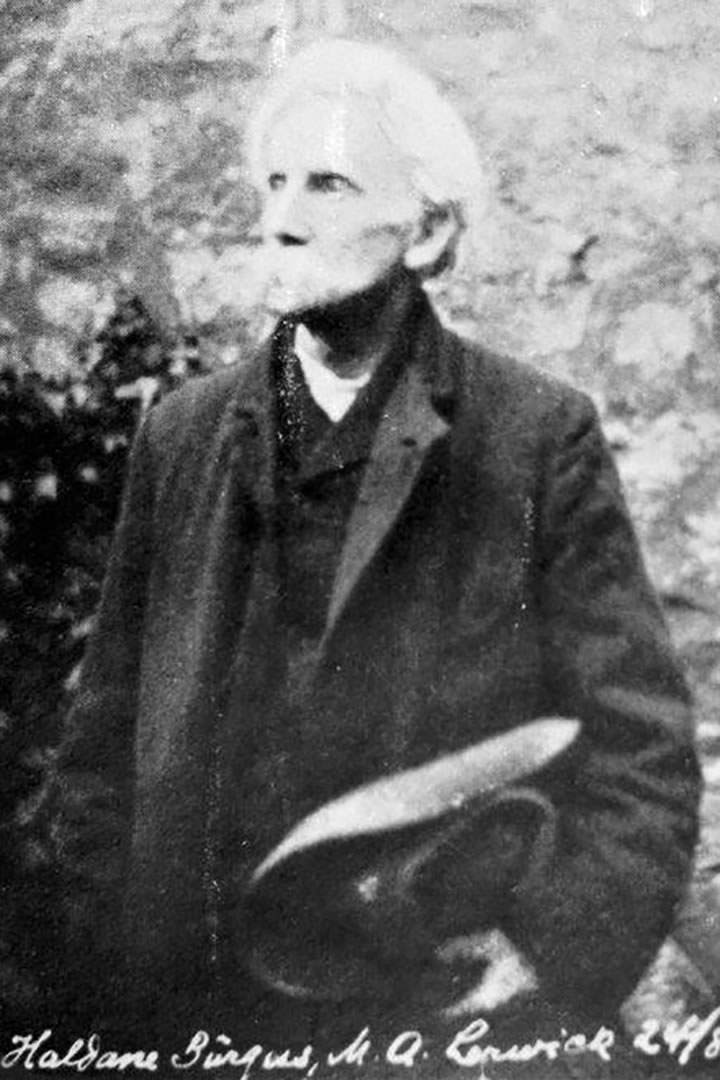
| 1897 | J.J. Haldane Burgess was a Shetland poet and author who became blind during his time studying at Edinburgh University. Nevertheless he graduated with a MA degree in 1889 and became one of the most influential voices for Up Helly Aa. He wrote the Up Helly Aa song but the current tune did not come until later. Initially it was sung to the tune of John Brown's Body. |
| 1898 | The influence of Up Helly Aa begins to spread to other communities around Shetland. Scalloway was the first to hold its own fire festival, starting in 1898. |
| 1899 | The first 'Bill' was raised at the Market Cross. Although a large notice had been raised there before, the Bill was new. It is an annual political cartoon, created in secret and revealed on Up Helly Aa day. It is a summons with a double meaning. Words marked in red form another narrative, one filled with local humour which treads on more than a few toes! |
| 1901 | The death of Queen Victoria on 22nd January 1901 meant that, out of respect, Up Helly Aa did not take place this year. |
| 1906 | The 'Worthy Chief Guizer' was renamed 'Guizer Jarl', and the first to hold that position was J. W. Robertson. A Viking suit of armour was bought for each Guizer Jarl to wear. For that year only, the whole Jarl Squad also dressed as Vikings. |
| 1908 | The date of Up Helly Aa in January had shifted position from year to year until 1908. It was decided that Up Helly Aa would always take place on the last Tuesday of January. The decision was also made that the following day, Wednesday, would be a public holiday. |
| 1910 | Up Helly Aa was becoming too popular and too big for open houses. Two halls were also opened to accommodate the increasing numbers attending. |
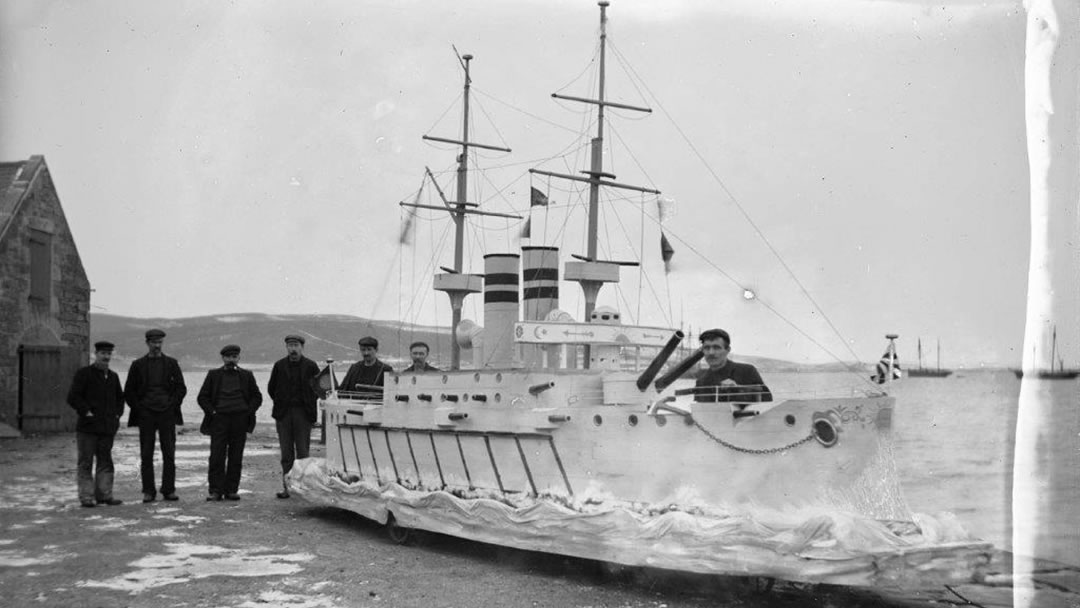
| 1912 | In previous years, Up Helly Aa processions included several amazing battleship models made by the docks boys as well as the Viking longship. In 1912 the docks boys were asked to stop making other ships and to concentrate their efforts on the galley. From this year, the centrepiece - a 30ft long galley - was spectacular. The docks boys dressed as Vikings and when everyone saw how impressive they looked, they were asked to lead the procession that year. |
| 1915 | Up Helly Aa stopped from 1915 to 1919 during the First World War. |
| 1921 | Remembering how impressive the Docks Boys had looked in 1912, it was decided that the Jarl Squad would always appear in full Viking costume. The Guizar Jarl would also no longer change out of the Viking armour into his own costume to go guizing. Also this year, Thomas Manson, whilst convalescing in bed (from ailments related to blood pressure) wrote the stirring tune which has accompanied the Up Helly Aa song ever since. |
| 1922 | Though these days most costumes are created at home, in the past, many of the guizers' costumes were ordered from the UK Mainland. In 1922 the ferry, St Ninian, was delayed for several days due to weather conditions. Fortunately, the ship (and the costumes on board) arrived in Scalloway on Up Helly Aa morning, and an extra cheer was made on the night for St Ninian and her master. |
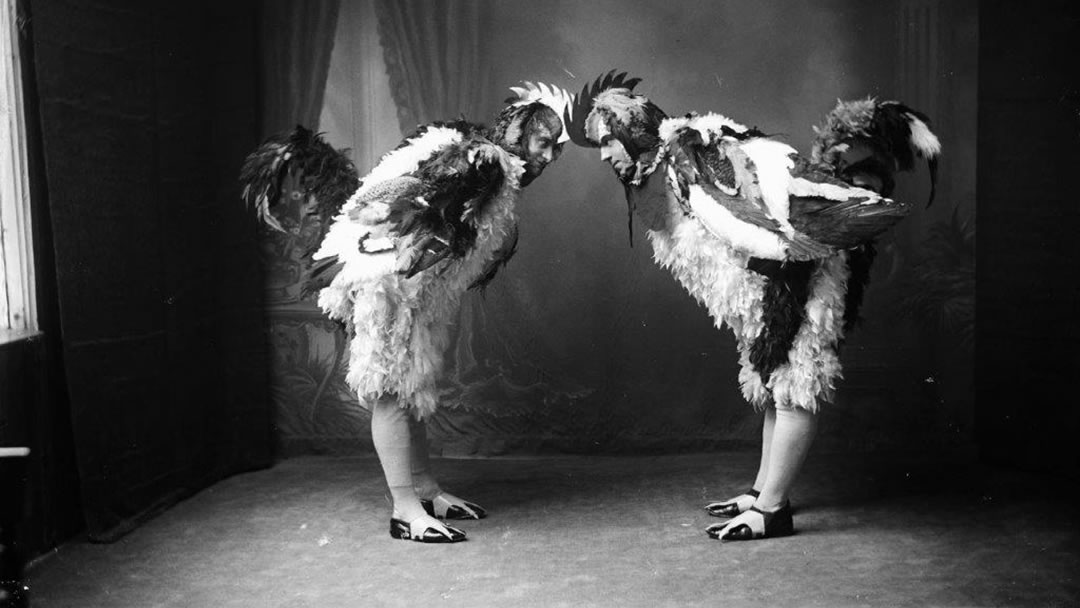
| 1928 | Private houses stopped hosting Up Helly Aa squads. From this year, only halls were open. These are now ticketed events, and all attendees are expected to do a couple of hours work, such as working in the kitchen, serving tables or manning the doors. |
| 1937 | Up Helly Aa was postponed for two weeks because of the influenza epidemic. |
| 1938 | On Up Helly Aa night in 1938, there was the most magnificent display of Aurora Borealis overhead. |
| 1940 | During the Second World War, Up Helly Aa stopped (from 1940 to 1948). When it restarted, all the guizers looked a bit drab due to rationing. |
| 1953 | Those that look at previous Up Helly Aa images will be struck by the clean shaven Vikings! It was not until around 1953 that work places began to permit men in the Jarls Squad to grow a Viking beard. |
| 1956 | Junior Up Helly aa begins. Though boys had enthusiastically celebrated Up Helly Aa by burning their own small galleys through the years, there was no formal ceremony was in place. In 1956 the headmaster of Lerwick Central School, George W Blance recognised the cultural importance of the fire festival and began Junior Up Helly aa, an event sponsored by the school. |
| 1957 | After a series of different burning sites, including the Market Cross, Gilbertson Park, and the dump by Clickimin Loch, King George V Playing Field was used for the first time. This has been the final burning site ever since. |
| 1958 | A little silver longship from the people of Maaloy, a town on Norway's west coast, was presented to the people of Lerwick. This started an annual ritual, where the Guizer Jarl and the Jarl Squad visit Lerwick Town Hall and drink a toast from the ship with the Lord lieutenant and County Convenor. |
| 1965 | The death of Winston Churchill on Sunday 24th January 1965 caused Up Helly Aa to be postponed by a week until 2nd February. |
| 1969 | After years of the galley being built all over Lerwick, a permanent workshop was established at the Galley Shed on St Sunniva Street. |
| 1971 | Oil was discovered beneath the North Sea to the east of the islands. The population of Shetland dramatically increased, from 17,000 in 1971 to almost 23,000 in 1981. The volume of men participating in Up Helly Aa became much larger as a result. A minimum age for Guizers - 16 - was introduced the following year. |
| 1972 | Although the Up Helly Aa organisers defiantly proclaim 'There will be no postponement for weather', Up Helly Aa in 1972 took place in winds so strong that the flaming torch heads were blown off their shafts. Up Helly Aa in 1933 was also notable for high winds and drenching rain. |
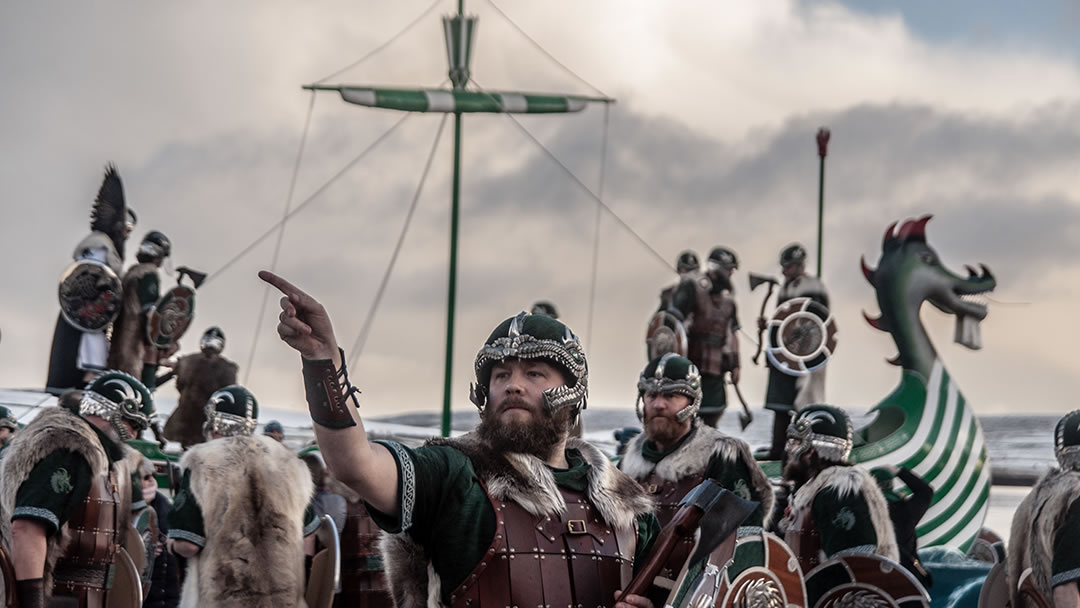
| 2021 and 2022 | The event was cancelled due to COVID-19. |
| 2024 | Jarl Squad costumes, which looked slightly amateurish at the start of the 20th century, now look very professional, almost like the costumes of film extras. The Jarl Squad now always tries to create something original and better than the previous year's squad outfit, and the design is created in secret and not revealed until Up Helly Aa day. |
 By Magnus Dixon
By Magnus DixonOrkney and Shetland enthusiast, family man, loves walks, likes animals, terrible at sports, dire taste in music, adores audiobooks and films, eats a little too much for his own good.
Pin it!
